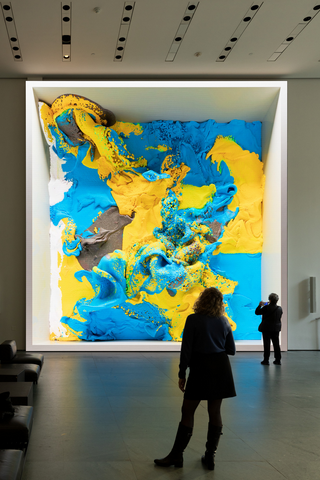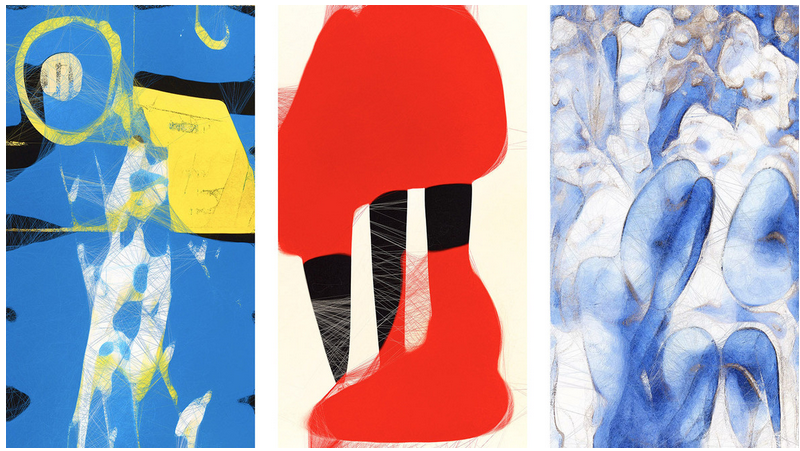Refik Anadol, an LA-based artist who is known for his aesthetics of machine intelligence projects, trained a sophisticated machine-learning model to interpret MoMA’s collection that spans more than 200 years. The artificial intelligence “interpret and transform the Museum’s data” and “create new forms that could exist…but don’t.” It is as if the machine can dream after seeing the Museum’s collection.
Unsupervised is Anadol’s exhibition that reflects on “technology, creativity, and modern art.” Anadol makes machine-learning’s dreams come true. He instructs machine intelligence to recognize the vast range of works, then to ‘dream’ new images of “what might have been and what might be to come.” In turn, Anadol transforms the environment of the Museum’s Gund Lobby into a large-scale “living” animation presenting “unique visualizations that unfold unpredictably and have no predetermined outcomes.”

The outcome images were incredible. Sometimes it looks like multi-dimensional ocean waves, sometimes an abstract color field painting. These images remind me of works by modern expressionist and abstract artists, such as Van Gogh, Vasily Kandinsky, Malevich, Mark Rothko, and Jackson Pollock. However, somehow this image is something new, never created before.

Unsupervised was created based on 138,151 pieces of metadata from MoMA’s collection that were processed by a machine learning model known as a generative adversarial network (GAN). Anadol embedding it in 1024 dimensions complex spatial map. Machine intelligence also creates instantaneous and constantly changing visuals in high resolution. The machine really could visualize “the dreams” of modern art.
In an interview with MoMA, the artist admits that he is inspired by the legacies of abstraction, systems art, Surrealism, and Expressionism. He is also indebted to the Light and Space movement that emerged in Southern California in the 1960s. In his works, he often plays with optical illusions, Minimalism, and geometric abstraction. “The early pioneers of computer art—such as the geometric abstraction of Vera Molnár and the algorithmic drawings of Georg Nees” also motivate him to work at the intersection of art, science, and technology.
Refik Anadol is a Turkish-born artist that currently resides in Los Angeles. He is “an internationally renowned media artist, director, and pioneer in the aesthetics of machine intelligence.” Anadol owns his studio named Refik Anadol Studio and RAS LAB which develop approaches to data narratives. Anadol and his studio are “embedding media arts into architecture with data and machine intelligence for public art, data sculpture, and paintings.”
Anadol’s previous work “Machine Hallucinations: Coral” (2021) created images of alternative coral shapes and colors based on “35,742,772 images of coral from publicly available social media platforms and processed them with machine learning classification models.” This work is a part of Anadol Studio’s ongoing research project on data aesthetics based on collective visual memories of nature.
Refik Anadol: Unsupervised is on view through 5 March at MoMA.
Here is a video from Refik Anadol’s Quantum memories, 2020:
NGV TRIENNIAL | REFIK ANADOL
NGV Melbourne

